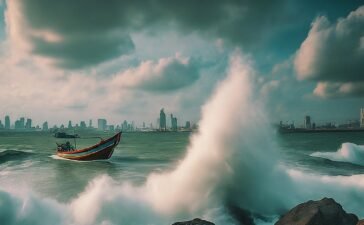Toyota Motor Thailand is gearing up to convince its parent company to pour investment into a fourth production line in Thailand, as operations here have become the company’s strongest in the aftermath of the tsunami.
Toyota Thailand is now producing the fastest of all Toyota’s production sites around the world. It is running at 120 per cent of capacity, exceeding the 70 per cent capacity of its parent company in Japan. This has made Thailand Toyota’s most important manufacturing base.
Kyoichi Tanada, president of Toyota Motor Thailand, recently said in an interview with Nation Multimedia Group that the company would try to run at 120percent capacity by July. This would be faster than United States’ production, which will run at full capacity in AugustSeptember this year, and Japan, which is expected to resume normal production in September.
There are two key factors that have helped Toyota Thailand to become the fastest manufacturing base to resume normal operations.
The first is that the company switched to importing auto parts from other suppliers within two weeks of the quake and tsunami hitting the northeast part of Japan. Luckily, around 95 per cent of Toyota’s pickup trucks and 80 per cent of passenger cars made in Thailand are made with locally made parts. So only a few, like electronic components for vehicles, which are still made in Japan, had to be shifted to other suppliers.
Although the company has faced higher operating costs as it has asked new suppliers to invest in providing the parts it wants, it has been worthwhile, added Tanada.
The second reason is support from the parent company, which came because Toyota Thailand is the major manufacturing and export base for onetonne pickup trucks. The company, which is the biggest of Toyota’s production sites in Southeast Asia, currently exports these vehicles to 110 countries worldwide. The parent company recognised this important factor, allocating the most auto parts to Thailand so it could resume normal production quickly.
“Our responsibility is not limited to Thailand but also to markets around the world. If Thailand was not Toyota’s major export base, we may not have been the fastest producer of Toyota to resume normal operations. This is due to the strong support of our parent firm,” he said.
For Toyota to run at 100percent capacity, it has to produce for 16 hours per day. To run at 120percent capacity means it needs three hours of daily overtime.
Tanada added that although the company was able to resume its normal production faster than expected and run at 120 per cent of total capacity, it might not reach its production target this year of roughly 700,000 units. Toyota will lose production of around 50,000 units during the first tough two months. The best production output it could manage this year could be 510 per cent higher than last year’s 630,000 units.
“I’m confident that Toyota Thailand can overcome last year’s sales volume. We will try harder and we will make it,” he said.
He said Toyota Thailand would convince the parent company to invest in a fourth manufacturing site in Thailand in addition to the existing facilities in Samrong in Samut Prakarn, Gateway Industrial Estate and Ban Pho in Chachoengsao. The new plant will have production capacity of 100,000 units per year with the possibility to rise to 200,000 units later. The new investment will diversify risk from dependence on production in Japan.
“Thailand has the potential for new Toyota investment. Thai employees here strongly understand Toyota’s culture, as we have operated in Thailand for almost 50 years. Besides, Thai skilled labourers are better than those in other countries like India and Indonesia. A key performance index conducted internally showed that our labourers have the best productivity and efficiency compared with others. So we will ask the parent company to invest in Thailand,” he said.
Source: The Nation





